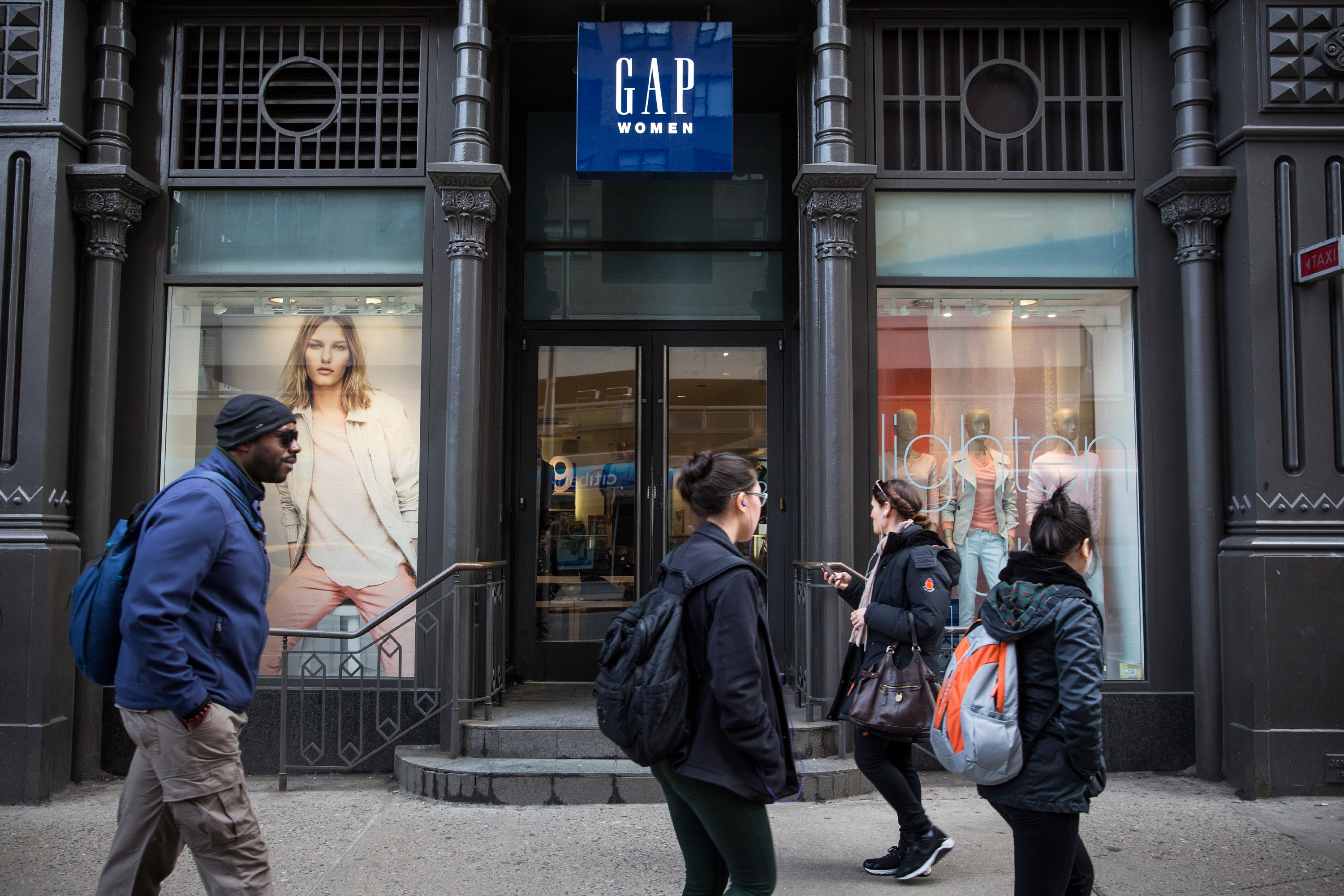How Gap fell out of fashion
Gap is closing a quarter of its 675 North American stores. What happened?

Gap is closing a quarter of its 675 North American stores. What happened? Here's everything you need to know, in four paragraphs:
"American mid-market fashion has lost its way," said Hiroko Tabuchi and Hilary Stout at The New York Times. "Once the master of casual," Gap recently announced that it would close a quarter of its 675 North American stores amid a steep slump in sales. J.Crew, whose same-store sales are down 10 percent from last year, this month eliminated 10 percent of its corporate workforce and fired its head of women's design. Brands including Ann Taylor, Abercrombie & Fitch, and Banana Republic are all reporting similar struggles. Shoppers "increasingly want deeply discounted clothes over classic logos and status," said Ashley Lutz at Business Insider. Millennials in particular are happy to "shell out for items like iPhones and Netflix," but the notion of paying full price for staples like sweaters and jeans just isn't in their DNA.
Meanwhile, cheap and chic retailers from overseas — like Sweden's H&M, Japan's Uniqlo, and Spain's Zara — "are running circles" around their American competitors, said Tanya Dua at Digiday. H&M plans to open 65 new stores in the U.S. this year, and Zara will open at least a dozen. Gap and J.Crew simply can't "keep up with quick-changing trends" the way their fast-fashion rivals can, said Hilary Milnes, also at Digiday. They are struggling with quality declines too. Both Gap and J.Crew have been battered on social media in recent months by once loyal shoppers complaining of poor craftsmanship and unflattering styles. Gap's attempt to cash in on "normcore" fashion with a widely derided "Dress Normal" campaign just showed "how tone deaf the once trend-setting company had become."
The Week
Escape your echo chamber. Get the facts behind the news, plus analysis from multiple perspectives.

Sign up for The Week's Free Newsletters
From our morning news briefing to a weekly Good News Newsletter, get the best of The Week delivered directly to your inbox.
From our morning news briefing to a weekly Good News Newsletter, get the best of The Week delivered directly to your inbox.
It's obvious these companies' executives have never seen "the battlefield of the retail sales floor," said Bree Davies at Racked. I worked at Gap on and off for seven years and witnessed its decline firsthand. In the glory days before 2008, my store in a luxury mall was packed with shoppers year-round. Then the recession hit, and Gap started making decisions that "made no sense." Customer service suffered as our knowledgeable staff dwindled. There were "embarrassing bargain-basement-style sales" that changed every day. Shoppers were bombarded with "equally manic and confusing" coupons. Even when Gap had a winner, like colored denim, it took weeks to get restocked. By then, customers had already headed over to Forever 21 or H&M to buy their jeans.
Gap and its ilk are stuck in the middle of an "extremely polarized" fashion industry, said Véronique Hyland at New York. Just as low-priced retailers are thriving, so are luxury brands, "fed by the wealth of the growing super-rich class." The challenge for mid-tier retailers is that even customers who can afford slightly pricier sweaters are shopping downmarket, and they've been trained to wait for full-priced inventory to go on clearance. When shoppers do pay full price, they want investment pieces. Gap and brands like it won't ever be as fast as H&M or Zara, "but by refocusing on quality and fit, they may be able to work their way back into people's wardrobes — especially when the ultracheap sweater that seemed like such a deal falls apart in the wash."
A free daily email with the biggest news stories of the day – and the best features from TheWeek.com
-
 US citizens are carrying passports amid ICE fears
US citizens are carrying passports amid ICE fearsThe Explainer ‘You do what you have to do to avoid problems,’ one person told The Guardian
-
 All roads to Ukraine-Russia peace run through Donetsk
All roads to Ukraine-Russia peace run through DonetskIN THE SPOTLIGHT Volodymyr Zelenskyy is floating a major concession on one of the thorniest issues in the complex negotiations between Ukraine and Russia
-
 Why is Trump killing off clean energy?
Why is Trump killing off clean energy?Today's Big Question The president halts offshore wind farm construction
-
 The pros and cons of noncompete agreements
The pros and cons of noncompete agreementsThe Explainer The FTC wants to ban companies from binding their employees with noncompete agreements. Who would this benefit, and who would it hurt?
-
 What experts are saying about the economy's surprise contraction
What experts are saying about the economy's surprise contractionThe Explainer The sharpest opinions on the debate from around the web
-
 The death of cities was greatly exaggerated
The death of cities was greatly exaggeratedThe Explainer Why the pandemic predictions about urban flight were wrong
-
 The housing crisis is here
The housing crisis is hereThe Explainer As the pandemic takes its toll, renters face eviction even as buyers are bidding higher
-
 How to be an ally to marginalized coworkers
How to be an ally to marginalized coworkersThe Explainer Show up for your colleagues by showing that you see them and their struggles
-
 What the stock market knows
What the stock market knowsThe Explainer Publicly traded companies are going to wallop small businesses
-
 Can the government save small businesses?
Can the government save small businesses?The Explainer Many are fighting for a fair share of the coronavirus rescue package
-
 How the oil crash could turn into a much bigger economic shock
How the oil crash could turn into a much bigger economic shockThe Explainer This could be a huge problem for the entire economy